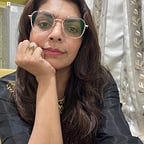Book Review- Girl, Woman, Other
12 womxn, 12 lives, one story
Usually, readers fall for the narratives in fictional stories. The stories glue the readers to the edge of their seats. Quite the same, I fall for stories and sometimes character-driven plots. But a strange thing happened while reading Girl, Woman and Other. Metaphorically speaking, I was pleasantly resigned to reading in a semi-conscious state, moving from one story to another and coming back. In between, I had a hard but man-to-man talk with myself. The narrative compelled me to rehash and straighten my perspective on internal human turmoil and feminism.
The narrative is compelling and free-flowing
Simply put, in the book Girl, Woman, Other, I am fascinated by the narrative and the style of prose, called poetic fiction, by the author Bernadine Evaristo. The prose is free-flowing, to be precise. There aren’t many full stops and speech markers, giving the prose a unique character. Even the initial letters are not capitalized. This gives the book a free-flowing, poetic structure, allowing the reader to sneak into the character’s childhood and access their subconscious.
The book could have been historical fiction
So, the book is a compilation of 12 interconnected, intergenerational stories of 12 diverse, bold and black British women over 100 years. The plot is highly character-driven, and each has a back story that forces the reader to cultivate a compassionate outlook for that character. However, the author Bernadine Evaristo calls it Stories of Womxn to make her stories trans-inclusive. The womxn in the tale are lesbian, non-binary and homophobic. And this gives the book a messy, complicated, yet nuanced structure. And some stories date back to 1875, and one of the oldest characters is Hattie.
Chapters are named after characters
Each character comes with a stroke of flawed humanness and womanhood. Also, they refract a variety of human experiences. At a point, I felt the book covered almost every possible story a woman might navigate in a lifetime in broad strokes. The stories can be imagined as a rich, intricate and colourful tapestry which produces a kaleidoscopic vision. The characters are so powerful that they take the readers to the past, bring them back to the present and repeat.
Each story has a protagonist for 30 pages because each story is singular yet interconnected. But still, for me, Amma is the protagonist among the protagonists. Amma is a lesbian and Yazz’s mother. But, at the same time, Yazz is super critical of her parents and is humanitarian and fun. And there are other groups based on their relations — for example, Dominique, co-founder at Amma’s theatre and her best buddy.
In contrast, Carole is a working-class Nigerian and raised her ranks to the corporate world by securing a degree from Oxford. Carole’s mother is Bummi, a Nigerian immigrant and an old-school bi-sexual. Winsome falls in love with her son-in-law, while Hattie is a formidable matriarch who’s lived on her farm for almost 93 years. Some are very dark, while some don’t look black enough. To structure the glorious mess of womxn, the author has grouped the characters. The first group is Amma, Yazz, and Dominique due to their close relationship. Next are Carole, Bummi and LaTisha. Finally, the woman, either by fate or blood, crosses the path and creates a co-story.
The book leans into a more nuanced understanding of genetic ancestry
Hattie, one of the oldest characters, has always stayed on her farmland and is alien to London. She is a matriarch to a colossal brood but has a lifelong regret. While she was a teenager, she was forced to abandon her infant baby because the baby was out of wedlock. Those days were brutal for women because the resources for abortion and pregnancy detection were zero, which led to miserable lives and labels for the girls. While she carries the weight of guilt as life progresses, her daughter, Penelope, who’s from London, discovers that her current parents have adopted her. Later, Penelope goes for her DNA test and scourges online for a connection. To my utter surprise, the two women find each other. The narrative underlines that genetic ancestry tests complicate the identity question instead of simplifying it.
The book allows the readers to have a compassionate outlook
However some people call it a feminist novel, but the way I see it, it is more of a human novel. Based on the disappointments, successes, pains, losses, and acquired affluence of black and biracial women and other humans attached to them. Moreover, the novel is segregated into 12 stories but is a cohesive novel with fluidity as a major theme. From gender fluidity to class to sexuality, the book narrates the powerful stories of women of all ages. I find this interesting because we usually read the stories of a young woman’s struggle, resilience and love, and sometimes I felt left out as a middle-aged woman. Reading the book, I am sure this book will give the woman passed their youth, a strong foothold to feel validated.
In conclusion, “Girl, Woman, Other” is a compelling and thought-provoking read that explores the complex layers of identity, race, gender, and sexuality. Bernardine Evaristo’s writing style is engaging, and her characters are vividly drawn, creating an alternate realm for readers to get lost in their stories. Through her interwoven narratives, Evaristo sheds light on the lives of black British women and their experiences, highlighting both the struggles and the joys of their diverse and multifaceted lives. Overall, “Girl, Woman, Other” is a must-read for anyone interested in contemporary literature, social issues, and intersectional feminism.
